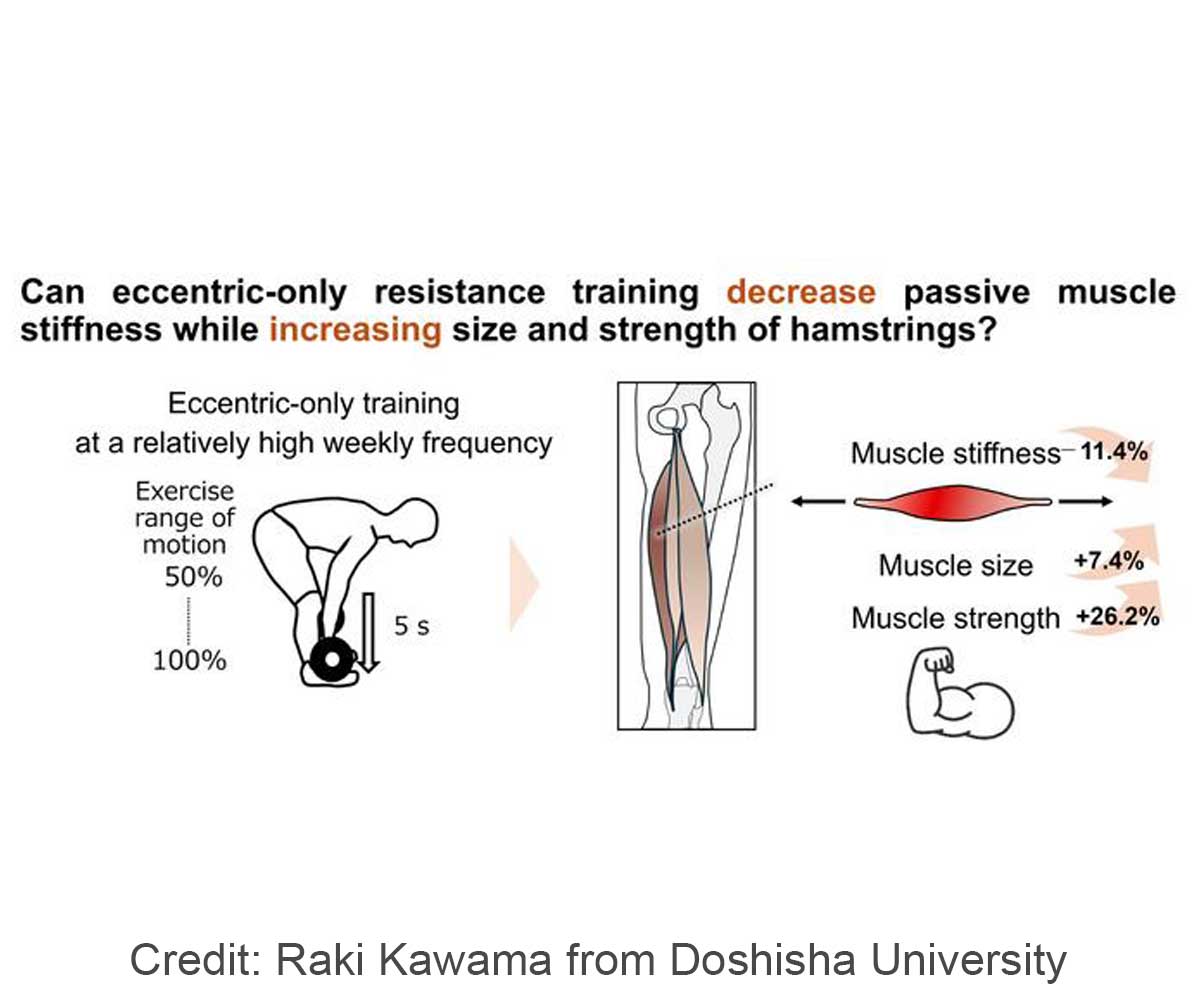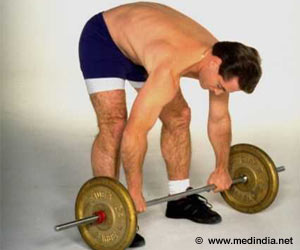A training method that consistently reduces the passive stiffness of a specific muscle while simultaneously enhancing muscle strength and size identified.

Can Eccentric-only Resistance Training Decrease Passive Muscle Stiffness while Increasing Size and Strength of Hamstrings?
Go to source).
The Impact of Resistance Training on Muscular Strength and Passive Muscle Stiffness
Resistance, or weight training, is commonly recommended in sports and rehabilitation for its effectiveness in increasing muscular strength and size. This exercise involves applying resistance to muscle contraction to build strength. However, some practitioners believe resistance training may increase passive muscle stiffness over time. Passive muscle stiffness indicates how muscles mechanically behave when stretched without active contraction, specifically referring to the force needed to change muscle length during passive stretching.‘#Resistancetraining offers a comprehensive approach to muscular development. Beyond enhancing #musclestrength, it also contributes to a reduction in passive #musclestiffness. #jointhealth ’





Few studies have investigated the long-term effects of resistance training on passive muscle stiffness. One study showed that the passive muscle stiffness of the semimembranosus (SM), one of the three hamstring muscles in the thigh, can decrease for a short time after eccentric-only resistance training at long muscle lengths with long contraction duration (LL). Eccentric-only resistance training focuses solely on the muscle-lengthening phases of exercises, such as deadlifts. Additionally, stretching studies have shown that SM stiffness can decrease in the long term with static stretching performed at a high weekly frequency.
Building upon these findings, a team of researchers from Japan, led by Assistant Professor Raki Kawama from the Faculty of Health and Sports Science, Doshisha University, investigated whether high-frequency eccentric-only resistance training at LL could chronically reduce passive muscle stiffness. “During my time as a coach for a university athletic team, I often encountered the myth that excessive resistance training increases passive muscle stiffness, despite limited clear evidence. Inspired by findings from previous stretching studies, I hypothesized that passive muscle stiffness could be decreased by resistance training using a combination of eccentric contractions, long muscle lengths, and a long contraction duration,” explains Prof. Kawama while sharing the motivation behind their study.
The study included contributions from Katsuki Takahashi, Tatsuya Hojo, and Taku Wakahara from the Faculty of Health and Sports Science at Doshisha University. It was published online in Medicine & Science in Sports & Exercise.
In the study, thirty-six young men were assigned to two training groups, W2 and W3, which performed resistance training at a frequency of two and three weekly sessions, respectively, along with a control group that did not perform any exercise. In both W2 and W3, the participants performed eccentric-only stiff-leg deadlifts at a range of motion from half to full, with each repetition lasting five seconds over ten weeks. Before and after the intervention period, the researchers measured the shear moduli of the hamstring muscles (indicating their stiffness), the maximal voluntary isometric torque of the knee flexion (the maximum force the hamstrings can generate while attempting to bend the knees against an immovable object), and the volumes of the individual hamstring muscles.
Advertisement
These results suggested that the passive muscle stiffness of a specific muscle can be chronically decreased through eccentric-only resistance training with LL at a high weekly frequency and high total training volume. These findings provide crucial insights into the adaptive plasticity of passive muscle stiffness.
Advertisement
Sharing the long-term implications of their study, Prof. Raki concludes, “In the next five to ten years, this new method could significantly improve the effectiveness of training and rehabilitation programs, leading to better outcomes for athletes and patients.”
Reference:
- Can Eccentric-only Resistance Training Decrease Passive Muscle Stiffness while Increasing Size and Strength of Hamstrings? - (https://journals.lww.com/acsm-msse/abstract/9900/can_eccentric_only_resistance_training_decrease.577.aspx)










